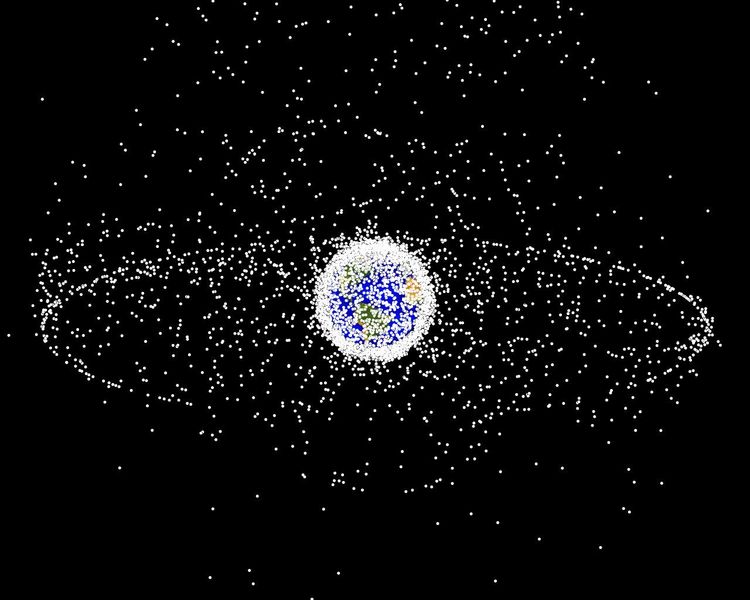Space junk is an ongoing concern for NASA, the European Space Agency and many others. After satellites live out their useful lives in orbit, more and more the agencies are trying to either move them far away from Earth, or to have the satellites burn up in the atmosphere. That’s basically to preserve orbital slots around the planet for others, and to reduce the risk of collisions.
But here’s an alternate approach — why not leave a few satellites handy for other missions to pick up? ESA recently opened a tender exploring this idea, and put a few thoughts out in a press release. Maybe leftover solid rocket fuel could be re-used. Metal alloys could be ground down for potential 3-D printing materials. Life support systems could use biodegradable materials. Since it costs so much to haul stuff into orbit, maybe it might be worthwhile to leave some available for future missions, ESA reasons.

“ESA’s new invitation for ‘Sustainable Materials Concepts’ is seeking companies to study various concepts of this approach, including considering the kinds of materials that could be reused as biological or technical nutrients – serving as resources for new other processes,” ESA stated.
“Also under consideration: what sustainable materials might replace current space-grade materials such as titanium and aluminium alloys or carbon-fibre epoxy resins? And how might the use of materials as biological or technical nutrients work in practice?”
What do you think satellites could be used for? Leave your thoughts in the comments.


Sci-Fi short story subject: One of the nouveau riche from Wall Street has a life changing epiphany after an automobile accident. Changes begin with a series of nightly vivid dreams. At first the ‘visions’ don’t make much sense as they arrive in a rapid series or succession of images. Slowly, he begins to see a pattern emerging. He redirects his ill-gained financial portfolio into a wholly new investment scheme. He frees up billions of dollars and buys up several recently bankrupted or defunct aerospace companies.He hires unemployed aerospace engineers and issues a series of directives. The team builds a fleet of inexpensive steam powered rockets and launches a fleet of automated salvage vehicles. The fleet roams LEO and beyond gathering components and materials for the next part of the vision.
Eventually, his robot armada assembles in lunar orbit and begins to build a gigantic ship…. which he calls ‘The New Ark’
Maybe an manufacturing satellite robot that recycles satellites and maybe use some of the parts as fuel for a ion drive.
Agreed. There’s plenty of stuff up there that could turn out to be handy, such as solar panels and leftover propellant.
On a related note, when the time comes to send people to Mars, we should send a cache of supplies and equipment into Mars orbit beforehand.
By the looks of that photo above, when we look for alien life, perhaps we should be looking for space junk! More on topic, if they are built with removable parts, that to would help.
A company could could do quite well recycling this stuff. Perhaps way easier than mining asteroids. Perhaps Planetary Resources Inc. could get a jump start using this material.
Yes kill two birds with one stone clear the space debris orbiting Earth and use them to manufacture parts in space with the free stuff to use.
Solar panels and antennas from old satellites could be unscrewed and connected to new ones.
Some of those satellites just needed a service. New battery, full tank of fuel and they would have good for another million miles or so. Its not that easy but some of the old LEO comms satellite beacons can still be heard occasionally as their batteries pick up a bit of charge.